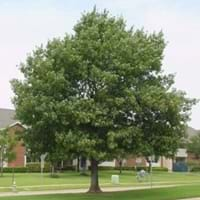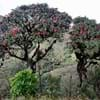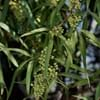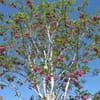Life Span
Perennial
Perennial
Origin
Northeastern United States, Mid-Atlantic United States, Southeastern United States, North-Central United States, Central United States, South-Central United States, Canada
Southeastern United States
Types
Ashford Oak, Chase Creek Red Oak, Shera-Blair Red Oak
Not available
Habitat
Sandy areas, Upland, Wooded slopes, Woodlands
Bluffs, Coastal Regions, Stream side, Woods
USDA Hardiness Zone
3-9
5-9
Sunset Zone
1a, 1b, 2a, 2b, 3a, 3b, 4, 5, 6, 7, 8, 9, 10, 11, 12, 14, 15, 16, 17, 18, 19, 20, 21, 22, 23, 24
Not Available
Habit
Oval or Rounded
Spreading
Flower Color
Yellow green
White, Pink
Flower Color Modifier
Bicolor
Bicolor
Fruit Color
Brown, Sienna
Brown
Leaf Color in Spring
Green, Dark Green
Green
Leaf Color in Summer
Green, Dark Green
Dark Green
Leaf Color in Fall
Red, Brown, Dark Red, Bronze
Lemon yellow, Yellow green
Leaf Color in Winter
Not Available
Not Available
Leaf Shape
Maple shaped
Palmate
Plant Season
Spring, Summer, Fall
Spring, Summer, Fall
Sunlight
Full Sun, Partial Sun, Partial shade, Full Shade
Full Sun, Partial Sun, Partial shade
Type of Soil
Clay, Loam, Sand
Clay, Loam, Sand
The pH of Soil
Acidic, Neutral
Acidic, Neutral, Alkaline
Soil Drainage
Well drained
Average
Bloom Time
Spring
Summer, Late Summer
Tolerances
Pollution, Drought, Salt
Salt, Wind
Where to Plant?
Ground
Ground, Pot
How to Plant?
Seedlings, Stem Planting
Cuttings, Seedlings
Plant Maintenance
Medium
Low
Watering Requirements
Do Not over Water
Keep the Soil well drained, Requires regular watering
In Summer
Lots of watering
Lots of watering
In Spring
Moderate
Moderate
In Winter
Average Water
Average Water
Soil pH
Acidic, Neutral
Acidic, Neutral, Alkaline
Soil Type
Clay, Loam, Sand
Clay, Loam, Sand
Soil Drainage Capacity
Well drained
Average
Sun Exposure
Full Sun, Partial Sun, Partial shade, Full Shade
Full Sun, Partial Sun, Partial shade
Pruning
Remove damaged leaves, Remove dead branches, Remove dead leaves
Remove damaged leaves, Remove dead branches, Remove dead flowers, Remove dead leaves
Fertilizers
Don't fertilize within a year of planting
14-14-14 Fertilizer, Apply N-P-K, slow-release fertilizers
Pests and Diseases
Borers, Caterpillars, Galls, Moth, Red blotch, Scale
Edema, Powdery mildew, Verticillium Wilt
Plant Tolerance
Drought, Pollution, Salt
Salt, Wind
Flowers
Insignificant
Showy
Flower Petal Number
Not Available
Single
Foliage Texture
Coarse
Coarse
Foliage Sheen
Matte
Matte
Attracts
Birds, Butterflies
Butterflies, Hummingbirds
Allergy
Not Available
Pollen
Aesthetic Uses
Showy Purposes
Cottage Garden, Showy Purposes
Beauty Benefits
Not Available
Not Available
Environmental Uses
Air purification
Air purification, Wildlife
Medicinal Uses
Not Available
Antirheumatic, Colic, constipation, Piles
Part of Plant Used
Whole plant
Seeds
Other Uses
Used as Ornamental plant
Used for making soaps
Used As Indoor Plant
No
No
Used As Outdoor Plant
Yes
Yes
Garden Design
Shade Trees, Street Trees
Feature Plant, Foundation, Screening, Wind Break
Botanical Name
QUERCUS rubra
AESCULUS parviflora
Common Name
Northern Red Oak
bottlebrush buckeye, dwarf horse chestnut
In Hindi
उत्तरी लाल ओक
Bottlebrush Buckeye
In German
Roteiche
Buckeye Putzer
In French
chêne rouge
Bottlebrush Buckeye
In Spanish
el roble rojo del norte
bottlebrush Buckeye
In Greek
βόρειο κόκκινο δρυς
bottlebrush Buckeye
In Portuguese
carvalho vermelho do norte
Bottlebrush Buckeye
In Polish
dąb czerwony
Bottlebrush Buckeye
In Latin
Quercus rubra
bottlebrush Buckeye
Phylum
Magnoliophyta
Magnoliophyta
Class
Magnoliopsida
Magnoliopsida
Family
Fagaceae
Hippocastanaceae
Clade
Angiosperms, Eudicots, Rosids
Angiosperms, Eudicots, Rosids
Tribe
Not Available
Not Available
Subfamily
Not Available
Hippocastanoideae
Number of Species
Not Available
Importance of Northern Red Oak and Bottlebrush Buckeye
Want to have the most appropriate plant for your garden? You might want to know the importance of Northern Red Oak and Bottlebrush Buckeye. Basically, these two plants vary in many aspects. Compare Northern Red Oak and Bottlebrush Buckeye as they differ in many characteristics such as their life, care, benefits, facts, etc. Every gardener must at least have the slightest clue about the plants he wants to plant in his garden. Compare their benefits, which differ in many ways like facts and uses. The medicinal use of Northern Red Oak is Not Available whereas of Bottlebrush Buckeye is Antirheumatic, Colic, constipation and Piles. Northern Red Oak has beauty benefits as follows: Not Available while Bottlebrush Buckeye has beauty benefits as follows: Not Available.
Compare Facts of Northern Red Oak vs Bottlebrush Buckeye
How to choose the best garden plant for your garden depending upon its facts? Here garden plant comparison will help you to solve this query. Compare the facts of Northern Red Oak vs Bottlebrush Buckeye and know which one to choose. As garden plants have benefits and other uses, allergy is also a major drawback of plants for some people. Allergic reactions of Northern Red Oak are Not Available whereas of Bottlebrush Buckeye have Pollen respectively. Having a fruit bearing plant in your garden can be a plus point of your garden. Northern Red Oak has no showy fruits and Bottlebrush Buckeye has no showy fruits. Also Northern Red Oak is not flowering and Bottlebrush Buckeye is not flowering . You can compare Northern Red Oak and Bottlebrush Buckeye facts and facts of other plants too.





